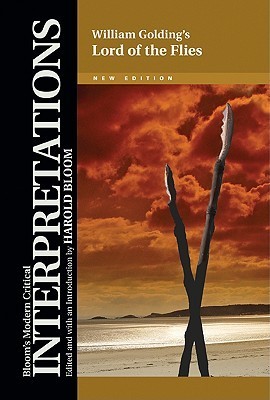
William Golding's Lord of the Flies
Book Description
Trapped on a deserted island, a group of boys discovers that survival doesn’t just mean food and shelter; it means wrestling with their own dark natures. As innocence crumbles and chaos erupts, alliances form and betrayals seethe beneath the surface. Tension mounts with each passing day, forcing friendships to shatter and leading to heart-stopping confrontations. In the battle between order and madness, who will emerge as the true master of their fate? This haunting tale echoes the primal battle within us all—can civilization hold against the savage instincts lurking just beneath the skin?
Quick Book Summary
Harold Bloom's critical analysis of William Golding's "Lord of the Flies" dives deep into the novel's exploration of human nature, civilization, and the thin veneer that separates order from chaos. Through the lens of Bloom's scholarship, readers see how Golding crafts a microcosm of society in the group of stranded boys, examining their descent from innocence into savagery. The book scrutinizes the shifting power dynamics between characters like Ralph and Jack, as well as the symbolic significance of objects such as the conch and the "beast." Bloom illuminates how "Lord of the Flies" confronts themes of morality, leadership, fear, and the innate darkness lurking within humanity. Through his analysis, Bloom reveals why Golding's novel remains a perennial subject of debate and a touchstone for discussions about the boundaries of civilization.
Summary of Key Ideas
Table of Contents
The Duality of Human Nature
Harold Bloom's study opens by framing "Lord of the Flies" as a profound exploration of the duality within human nature. Drawing from Golding's text, Bloom asserts that each boy on the island embodies conflicting impulses toward civility and savagery. Ralph's focus on rules and rescue reflects humanity's striving for order, while Jack's embrace of hunting and chaos exposes the lurking potential for violence. Bloom directs attention to how the isolation from adult authority forces the boys to invent their own society, and in doing so, Golding tests the strength and fragility of civilization's values.
Symbols of Civilization and Savagery
Symbols play a key role in Golding's narrative, and Bloom offers incisive interpretations of the conch shell, Piggy's glasses, and the titular "Lord of the Flies." The conch represents democratic order, while its gradual destruction parallels the boys’ slide into anarchy. Piggy's glasses symbolize insight and rationality but are misused and ultimately destroyed. The "Lord of the Flies," a grotesque totem of the boys’ fear, grows into a symbol for the inherent evil lying dormant within each individual. Bloom highlights how these objects serve as touchpoints for deeper philosophical questions embedded in the novel.
Leadership and Power Struggles
Leadership and the contest for authority are central themes. Bloom unpacks the conflict between Ralph, the elected leader attempting to uphold structure, and Jack, who seeks to dominate through fear and primal instinct. The boys' allegiances shift as circumstances grow more dire and the trappings of civilization fall away. Bloom critiques how Golding constructs these power struggles to reveal the precarious balance between order and dictatorship and how collective well-being can so easily give way to personal ambition.
Fear and the Constructed Beast
The element of fear, especially rooted in the mythical "beast," becomes the psychological engine driving much of the action. Bloom explains how this fear is both real and imagined—created by the boys’ isolation and their inability to confront the darkness within themselves. The "beast" ultimately becomes an external scapegoat for internal anxieties and moral collapse. Bloom connects these aspects to the larger horror sub-genre, illuminating Golding’s skill in making the boys’ ordeal a reflection of humanity’s broader fears.
The Loss of Innocence
In his concluding analysis, Bloom examines the overarching theme of lost innocence. The boys’ gradual embrace of violence—culminating in tragic and deadly consequences—serves as Golding’s cautionary tale about the cost of abandoning reason and empathy. Bloom contextualizes "Lord of the Flies" within literary traditions and emphasizes its enduring relevance, arguing that the story compels readers to reconsider what keeps civilization intact and what happens when those bonds are severed.
Download This Summary
Get a free PDF of this summary instantly — no email required.





